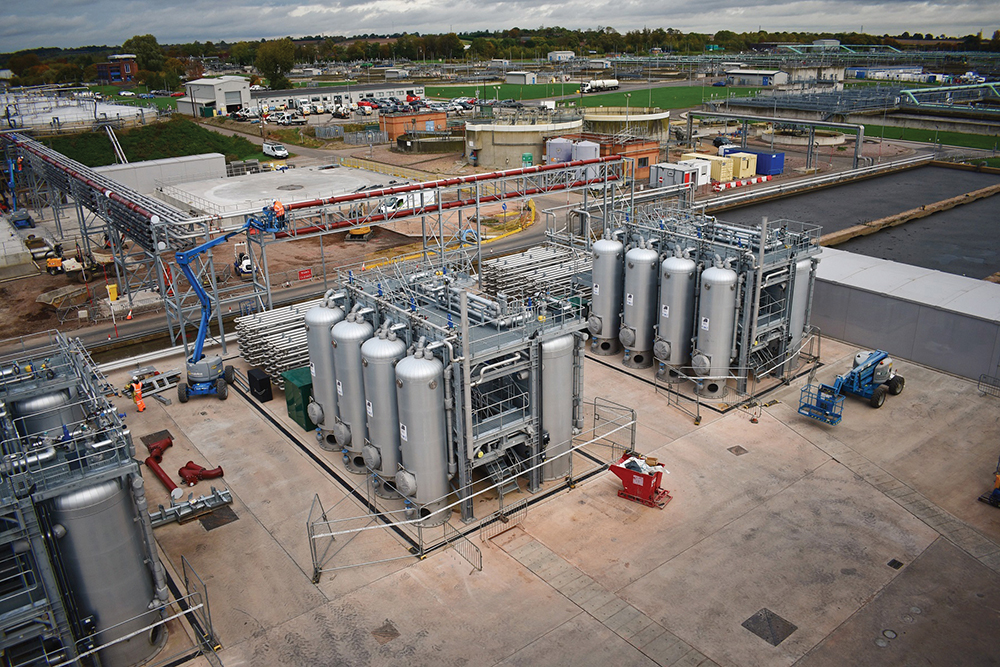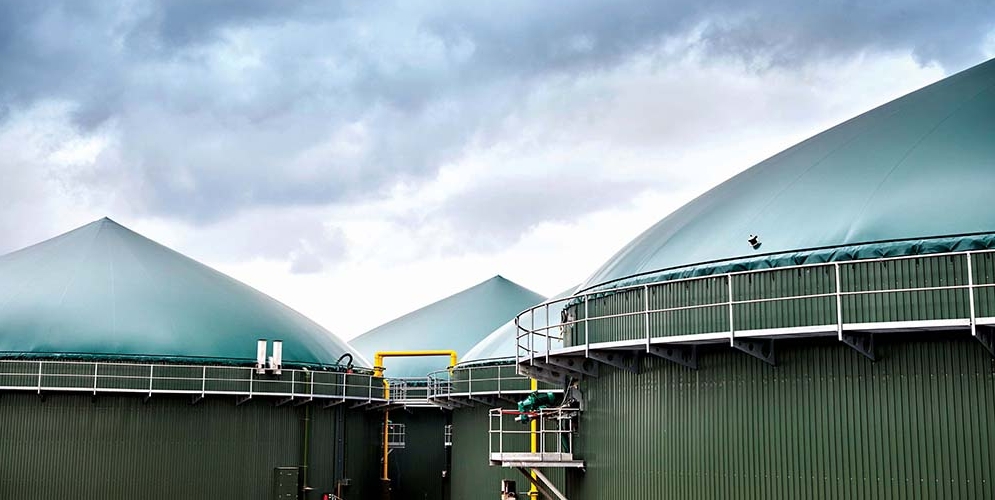Severn Trent is now generating 38% of the energy it uses from a number of different renewable sources and the company is continuing to invest in new technology to increase that further in the future.
In recent years the company has invested heavily in renewable energy across a variety of technologies. That means that Severn Trent, which serves more than eight million people across the Midlands and Wales, is generating more renewable energy than ever before.
As well as providing homes and businesses with a source of clean energy the additional output also provides a source of income which has contributed to making sure customers have the lowest average combined water and waste bills in England.
Currently Severn Trent generates energy through wind, hydro, crops and solar – but it’s expertise in the anaerobic digestion (AD) of sewage sludge, and more recently food waste, that is leading the way in the company’s ambition.
Neil Corrigall, head of green power at Severn Trent, explains: “We have more than 60 years of experience of using AD to generate clean energy, and, across the region, we have AD plants alongside our sewage treatment works that turn sludge into energy.
“A large amount of this green power is used to offset our own energy usage but we also generate green gas that is then treated and pumped back into the grid for use by homes and businesses.
“Now we’re using our expertise and experience of converting sludge into energy in a different way – to turn contaminated food waste into energy.”
 Last year Severn Trent opened its second food waste anaerobic digestion plant, at Roundhill near Stourbridge in the West Midlands, which followed the success of the first plant, which is based at Coleshill to the east of Birmingham.
Last year Severn Trent opened its second food waste anaerobic digestion plant, at Roundhill near Stourbridge in the West Midlands, which followed the success of the first plant, which is based at Coleshill to the east of Birmingham.
Another food waste plan is under construction at the company’s sewage treatment works in Derby and will be operational later in 2018.
The Roundhill plant will turn 50,000 tonnes of food waste a year into green gas, which is enough to heat around 2,700 homes for a year or enough renewable electricity to power 1,700 homes.
The food waste plants generate energy by digesting food waste from local businesses and waste management companies. The process produces biomethane which in turn is converted into gas suitable for the grid or electricity.
Neil continues: “The majority of the electricity we generate from the plant in Coleshill goes back to run the nearby sewage works, but the new plants at Roundhill and Derby will put treated biomethane into the gas grid.
“We have an ambitious target of generating the equivalent half of the energy we use by 2020 and on top of that our focus is increasingly turning towards ‘green gas to grid’ that will enable us to develop an additional income stream for the business.”
The company has also invested £15m to build three biomethane plants that turn the gas produced during the digestion of both sewage sludge and food waste into a product suitable to be injected into the gas grid.
The equipment is up and running at sites in Stoke-on-Trent, Nottingham and Derby, and is working to produce high quality green gas that can be used by local homes and businesses.
The company is also investing £60m in a cutting edge Thermal Hydrolysis Plant at its biggest sewage treatment works in Minworth near Birmingham.
The process works by treating sewage sludge, using heat and pressure in a similar way to a pressure cooker and will be in place by 2018. The THP heats sludge to 170°C before putting it under pressure.
This combination of heat and pressure sterilises and shatters the cell structure of the bacteria in the sludge. The treated sludge is then fed into huge digesters which biodegrade the volatile solid matter within the sludge and produce methane rich bio-gas.
Once that part of the process is complete, the sludge is then passed forward to the dewatering process where it is thickened, ready to be recycled as fertiliser for agricultural land.
This make the process of generating green power from sewage sludge far more efficient which means the amount of clean energy generated at the site will increase by almost a third.
Neil added: “We’ve been investing heavily in renewable energy to position ourselves as leaders in anaerobic digestion and to help us generate as much green power as possible from the waste that we treat.
“Customers are at the heart of everything we do and focussing on ways we can generate income from renewable energy means we can continue to drive down the cost of our customers’ bills.
“In the future we’ll be investing further and looking to new and innovative technology that will keep us at the forefront of using anaerobic digestion to generate clean energy for our customers.”



